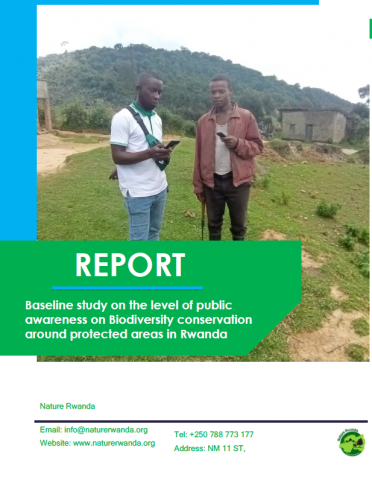
Over the last decades, the Government of Rwanda together with environmental stakeholders worked tirelessly to engage local communities in sustainable protection and management of protected areas. To achieve that, many public awareness programs were implemented to raise knowledge and skills, inspire positive attitudes and behavior, and motivate community members to become conservation partners. However, there is a gap in understanding the holistic impact of these awareness programs. Hence, this study was undertaken with the aim to assess the level of awareness, attitude and community participation in supporting biodiversity conservation around protected areas in Rwanda. The two-stage sampling method was used; the first was to select sample cells around five protected areas (ANP, GMNP, NNP, Rugezi wetland and VNP), where 66 of 123 cells were selected. In the second stage, 2,160 respondents were selected from the selected cells i.e. 432 respondents per protected area. Data were collected using a systematic questionnaire developed in CTO Software, and descriptive data analysis and statistical tests were performed by using STATA.
The level of awareness, attitude and community participation in supporting biodiversity conservation is generally low at all protected areas, but relatively higher at the VNP (10.185%) and lower at Rugezi wetland and NNP (6.713% each). It varies with gender, age segments, level of education, leadership position, and professional categories of respondents; higher in men (10.877%) than women (4.310%), higher among people aged 34-49 years old (10.847%) and lower among people above 65 years old (19.980%), higher among university graduates (40.909%) and lower among the people who have no formal education (3.255%), higher among the employees of the local government and teachers (50%, each), and lower among farmers and church leaders (6.216%, 0.00% respectively).
Future awareness activities should prioritize the use of more inclusive means of communication; such as considering the use of Kinyarwanda and interpersonal communication approaches. The message should be technically and scientifically relevant to bridge the gap of skills and knowledge transfer for inspiring community’s commitment and participation in addressing conservation issues at local levels. Moreover, the awareness raising campaigns/programs contents should be tailored to a specific group and the conservation stakeholders should use interactive communication methods rather than push and pull methods. Conservation stakeholders conducting public awareness on biodiversity conservation should refer to National Strategies and priorities to plan programs, projects, activities, and portfolios as well as setting clear goals for successful public awareness in Rwanda with tangible and measurable Key Performance Indicators.
